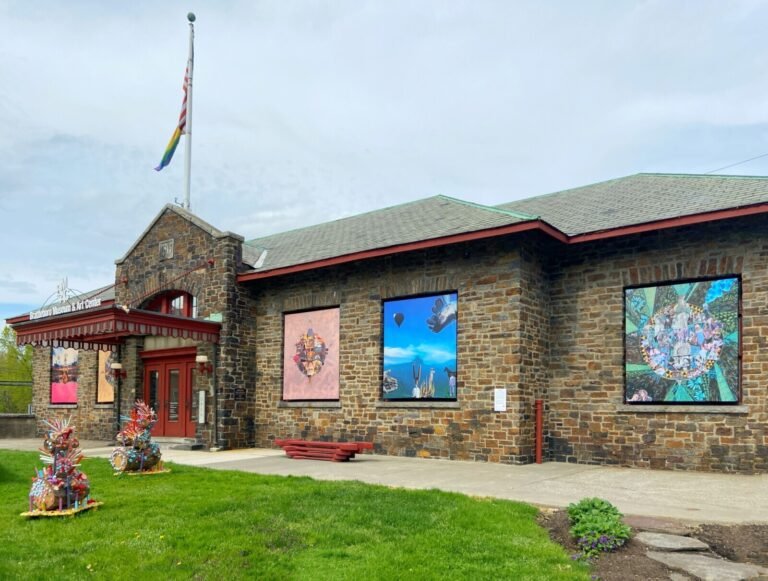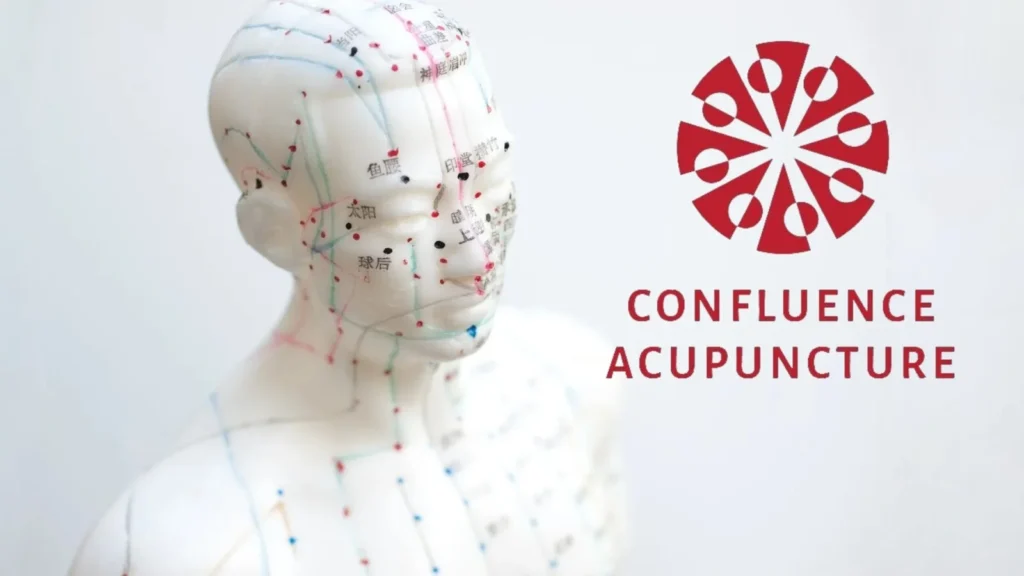Quamina’s collages, which are made of innumerable pieces of paper, some drawn and some printed, feature ghostly figures that waver between visibility and obscurity. The figures repeatedly emerge out of and recede into the rest of the image. In “Ketch yuh by Moon Night” (2024), a young girl walks among plant forms in the background. Her foot appears against the pale ground, as though she might step out of the brush into an opening. In making these collages, which explore the nature of belonging, Quamina reflects on her childhood, when she moved between South America, the Caribbean, and New York City. The works suggest that our experiences and identities are shaped not only by our individual selves and our human communities but also by our surroundings, which retain certain memories and traces of our pasts.
In his sculptural work, Tubbs undermines perceived boundaries between the human and natural. The floor piece “Written in Stone” (2016), which resembles 12 fossilized books arranged in a circle, comments on the slipperiness between preservation and extinction. Each component is made of two books: one whose form and words are still partly legible, and one that has been rendered illegible and transformed to look like stone. One book, then, is destroyed to preserve the other. Tubbs’ reflection on the violence that often characterizes material preservation and historical memory is connected to his background as a Kānaka Maoli (Native Hawaiian). His sculptures, while not traditional collage, similarly emerge out of processes of reassembly and recall that which is transforming, falling apart, or disappearing altogether.
Baeza integrates printed and drawn elements to portray figures that are continually transforming and suspended in elusive environments. Informed by Baeza’s own immigrant and queer experiences, his figures resist singularity or fixedness. They take on plural, shifting forms and identities, averting categorization. In “Flesh and Possibility” (2024), a Medusa-like figure floats, unmoored, against a dark background, releasing (or attracting) hair- or tentacle-like appendages. Baeza’s recognizable yet fantastical figures draw attention to the blurry lines between fact and fiction, as well as the many possible alternative narratives that arise when we embrace the indistinction between history and myth.
Gersht’s series “Becoming” depicts orchestrated moments of destruction that highlight ephemerality and loss. To make his photographs, Gersht used a medium-format camera to capture the instant when sheets of glass, printed with images of paintings from well-known museum collections such as the Rijksmuseum in Amsterdam, shattered under the impact of gun shots. Capturing “dispersed fragments of collective memory,” as Gersht calls the pieces of glass, the photographs evoke a return to a state of disorder from which creation can begin anew. Gersht’s interest in memory and memorialization relates to his family’s experience of the Holocaust, although he does not grapple directly with that history in this series. The works in “Becoming” suggest that chaos underlies human experience and undermines the linear histories often told in museums. Instead, the photographs call for narratives that consider materials and histories that get destroyed, lost, or otherwise erased from collective memory.
The collaged works in The Noise of Us represent methods of recalling and recounting our individual and collective pasts. What we consciously choose to remember and unconsciously recall informs the histories we tell ourselves and one another. As the works of Baeza, Gersht, Quamina, and Tubbs demonstrate, collage-like practices can visualize the cacophony of our lives, or “the noise of us.” We must simultaneously listen to and sift through this noise as we narrate and re-narrate our pasts in an attempt to better understand who we are today.






